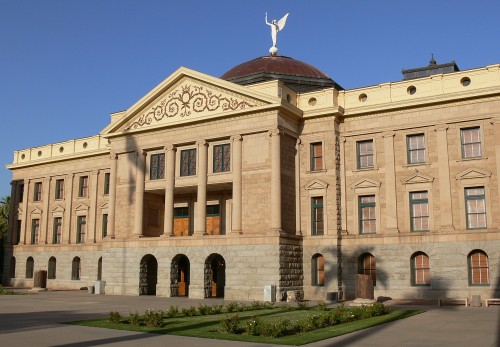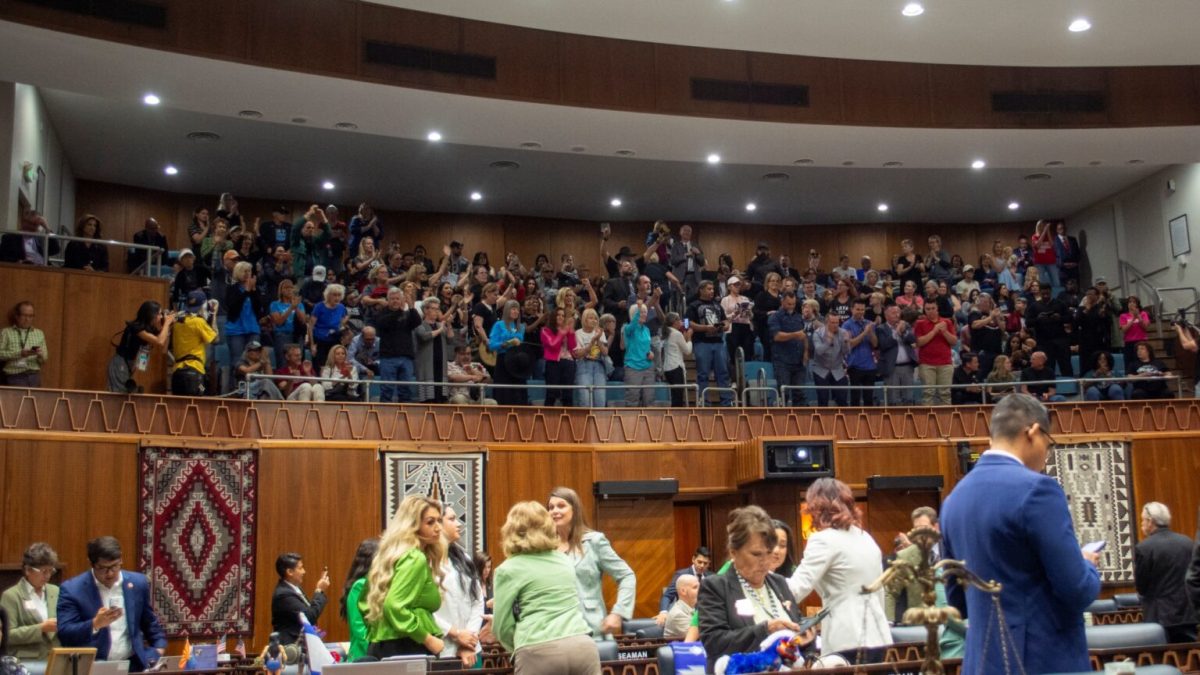
As a new legislature and a new governor prepare to settle into Phoenix, a projected budget shortfall is not far from anyone’s minds.
Just a year ago, the outgoing governor boasted about Arizona’s “comeback” and now the state faces a grim budget situation as it heads into the next year. Revised projections show Gov.-elect Doug Ducey and the legislature will contend with a $520 million budget deficit this year and a $1 billion deficit for the next.
Now, many worry what impact any budget-balancing measures – raising taxes and cutting spending – will have on the state.
The downward projections come from the Joint Legislative Budget Committee and cite a sluggish economic recovery, less-than-expected revenues and a court order to fund K-12 schools as reasons for the state’s slide from surplus into deficit.
State leaders are now working to find ways to balance the balance but are short on specifics.
Ducey formed a budget study committee comprising people from the public and private sector to advise on how best to balance the budget, said Daniel Scarpinato, a spokesman for Ducey’s transition team.
Ducey is constitutionally required to submit a budget by Jan. 16, where it will begin to wind through committees and votes in a coming budget fight.
Scarpinato said Ducey has made it clear that he will not be raising taxes, though wouldn’t specify what programs would be cut to balance the budget as the study committee is still working on its plan.
Senate President Andy Biggs, R-Gilbert, however, said that he would keep raising taxes as an option for closing the budget shortfall.
“Everything is on the table,” Biggs said. “I’m a big believer that if you have everything on the table, you can have a nice discussion.”
Biggs said in the end, he believes, legislators will come to the conclusion that raising taxes would not be a wise option in the current economic conditions.
He also cautioned that these projections could still change and the economy could pick up steam soon as unexpectedly as it slowed down in the past year.
Though, the promises from Ducey not to raise taxes have some worried about what programs will be cut further.
The biggest piece of the budget is K-12 education, which accounts for more than 40 percent of the state’s expenditures, followed by Medicaid and prisons.
Further adding to the budget woes, a Maricopa County Superior Court judge ordered the state to pay K-12 schools $336 million they were owed because Arizona failed to properly adjust funding for inflation during recent years in accordance with a voter-approved law. That $336 million is included in the adjusted budget projections.
The state is appealing the order, but Andrew Morrill, president of the Arizona Education Association, said there is “no further negotiation necessary.”
“The courts were clear, the voters were clear and we were clear,” he said.
Bruce Wheeler, D-Tucson, who will be the assistant House minority leader in the incoming legislature, said despite this order to fund K-12 education more, Republicans will look for ways to cut spending.
“[Republicans] always try to cut education further and further, which is self-defeating and disastrous,” Wheeler said.
Biggs said funding for K-12 education is getting “crowded out by social welfare spending,” referring to Medicaid.
Costs for Medicaid will increase significantly in the next few years, according to the JLBC projections. Gov. Jan Brewer fought hard to get Arizona among the states receiving the Affordable Care Act’s Medicaid expansion.
Tom Volgy, a political science professor at the University of Arizona, said the tax cuts passed in recent years are a major factor contributing to the budget deficit.
“They’re going to have a vexing big problem because they’ve cut back on their own ability to generate resources through tax cuts,” Volgy said.
In 2011, the state legislature passed corporate tax cuts that are beginning to be phased in next year. The JLBC projects that these tax cuts will cost the state $100 million in revenue for the 2016 fiscal year.
Wheeler said some Republicans are joining Democrats in calling for a delay in the implementation of these cuts.
Republicans argue that raising revenue through taxes will hamper the state’s already slow economic recovery.
House Speaker-elect David Gowan, R-Sierra Vista, said in an email that the legislature needs to focus on budget decisions that will encourage investment in Arizona’s economy.
“Anything less than that could end up stalling our fragile recovery and work to compound the budget challenges we face,” Gowan said.
The Arizona Chamber of Commerce and Industry, which says it represents Arizona business at the legislature, also wants to preserve the tax cuts passed state in recent years, said Garrick Taylor, spokesman for the group.
He said any effort to roll back these tax cuts will have a negative impact on business in the state. The chamber of commerce will release its agenda for the upcoming legislative session at a luncheon in January.
Sen. Katie Hobbs, D-Phoenix, senate minority leader-elect, said because Arizona relies heavily on sales taxes, the state’s revenue gets hit hard during economic downturn due to less consumer spending.
Hobbs is also worried what further cuts will do to an already trimmed state government.
“You can’t just keep talking about cutting, cutting, cutting, because we’ve really cut things back to almost the point where we don’t have sustainable government anymore,” Hobbs said.
Wheeler said the state’s $460 million “rainy day fund” could be used to pay for the $337 million to Arizona schools.
Biggs, however, cautioned against using the fund when making up budget shortfalls.
“Using one time sources is like cleaning out your bank account to pay for your house payment this month but next month you have to make another payment,” Biggs said. “You haven’t really corrected the problem; you’ve just kicked the can down the road.”
During the past few years, the JLBC report reads, most solutions to budget deficits were “one-time.” As the state faced mounting shortfalls, it used several tricks to generate revenue, such as selling government buildings to investors and having them leased back to the state.
Gowan said “gimmicks, borrowing and federal assistance” have been used to balance the budget in the past, but these can’t be used if the state is going to have a “truly balanced budget.”
Hobbs said the legislature should focus on readjusting the entire tax structure for the state rather than one-time solutions or further cuts.
Arizona’s counties are also anxious about what the budget deficit will mean for their own funding.
“All of the counties are kind of sitting on the edge of their seats wondering where we’re going to get hit again,” said Michael Pastor, chairman of the Gila County Board of Supervisors.
Money from the Highway User Revenue Fund, the state’s gas tax, is a major source of funding for the counties, but in the last few years the legislature has been taking money from this fund to pay for state programs, said Greg Ferguson, chairman of the Yuma County Board of Supervisors.
Increasingly, he said, the state has been using money that had been for the counties. One figure often brought up by the counties is that they have paid $20 million for sexually violent prisoners at the Arizona State Hospital in the past few years, which the counties say they did not agree to.
“They’ve been coming to this well now since 2008, and this well is about dry,” Ferguson said.
While state leaders search for solutions to the budget shortfall, Volgy said, Arizona’s outlook looks bleak for the moment and added that legislators have a difficult task ahead.
“It’s not going to be a very easy, happy life for them,” he said.
Ethan McSweeney is the Bolles Fellow covering the Arizona Legislature for Arizona Sonora News, a service provided by the School of Journalism at the University of Arizona. Reach him at [email protected]



